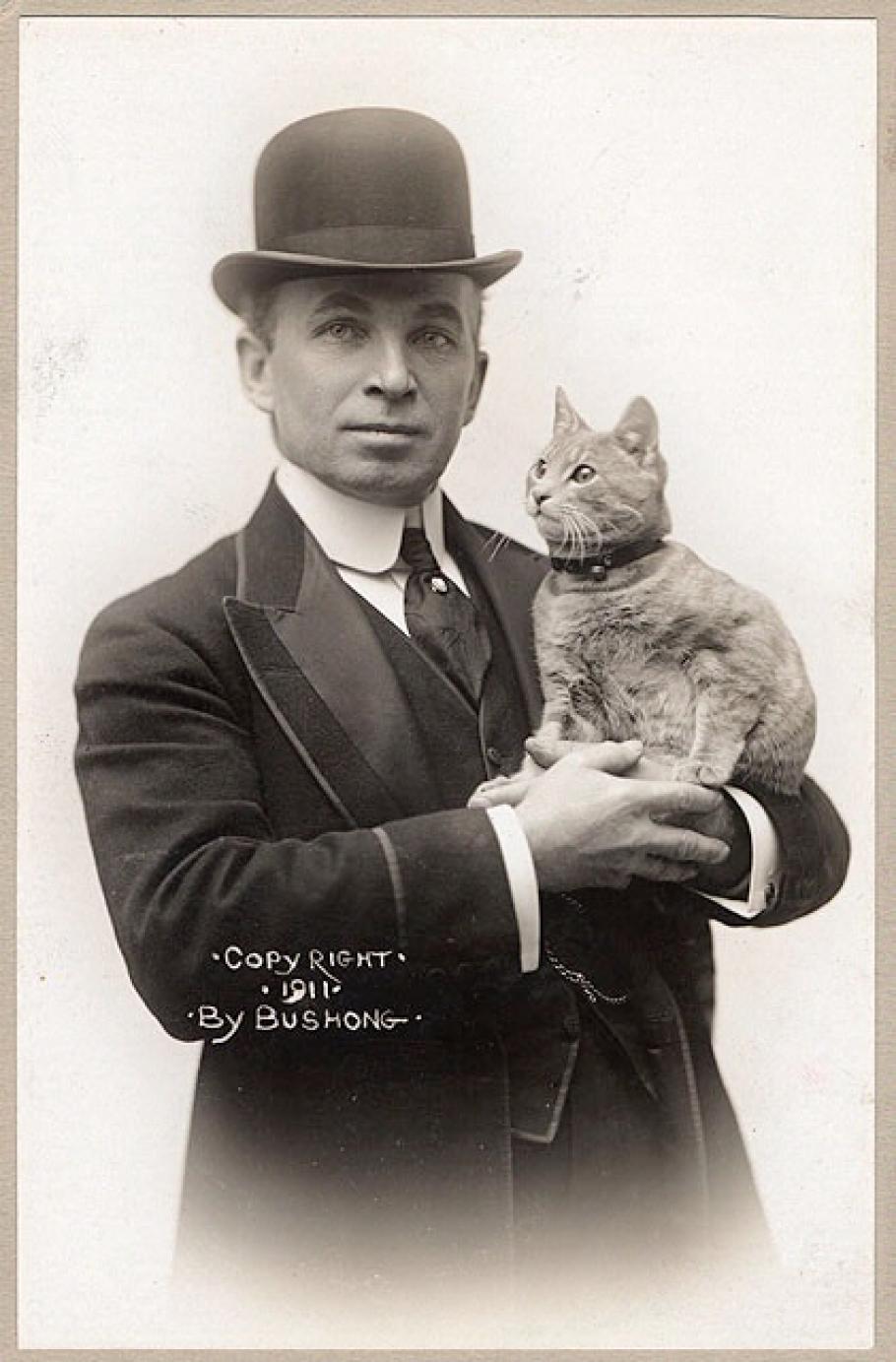“Roy, come and get this ---damn cat.”
On October 15, 1910, Kiddo the cat became the first of his kind to attempt to cross the Atlantic Ocean by airship—and he wasn’t very happy about it.
When aeronaut Walter Wellman’s America airship was preparing for take-off from Atlantic City, New Jersey, Kiddo was found in the airship’s lifeboat. The wide-eyed grey tabby was not pleased about his unexpected journey, and his howling annoyed the airship’s chief engineer, Melvin Vaniman. (The duo seemed to have made-up after their spat—enough to pose for a photo together, at least.)
The America was the first airship to have radio equipment. Kiddo has the distinction of being the subject of the first ever radio communication from an aircraft in flight: “Roy, come and get this ---damn cat.”
The 71 hours that Kiddo and the rest of the crew spent in flight were fraught with storms and engine failure. After traveling just over 1,300 miles from their launch point, the America sent out a distress signal. Kiddo and the crew were evacuated via the airship’s lifeboat on to a Royal Mail steamship. The America—no longer weighed down by the boat, crew, and cat—drifted away and eventually crashed off the coast of Maryland.
According to the airship’s navigator, Murray Simon, Kiddo preferred the sea-faring portion of the journey; he described Kiddo as perched on the lifeboat’s sail, “washing his face in the Sun, a pleasant picture of feline content.”
Despite not making it across the Atlantic, the America did break the record for the longest sustained flight. Kiddo returned to dry land a hero (and even got to meet his adoring public during his brief residency in a gilded cage filled with pillows at a New York City department store) and retired from the aviation field, going to live with one of Wellman’s daughters. The crew credited Kiddo and his nine lives with helping them survive the perilous journey.
Kiddo’s escape vehicle, the America airship lifeboat, became part of the Museum’s collection in 2010.


